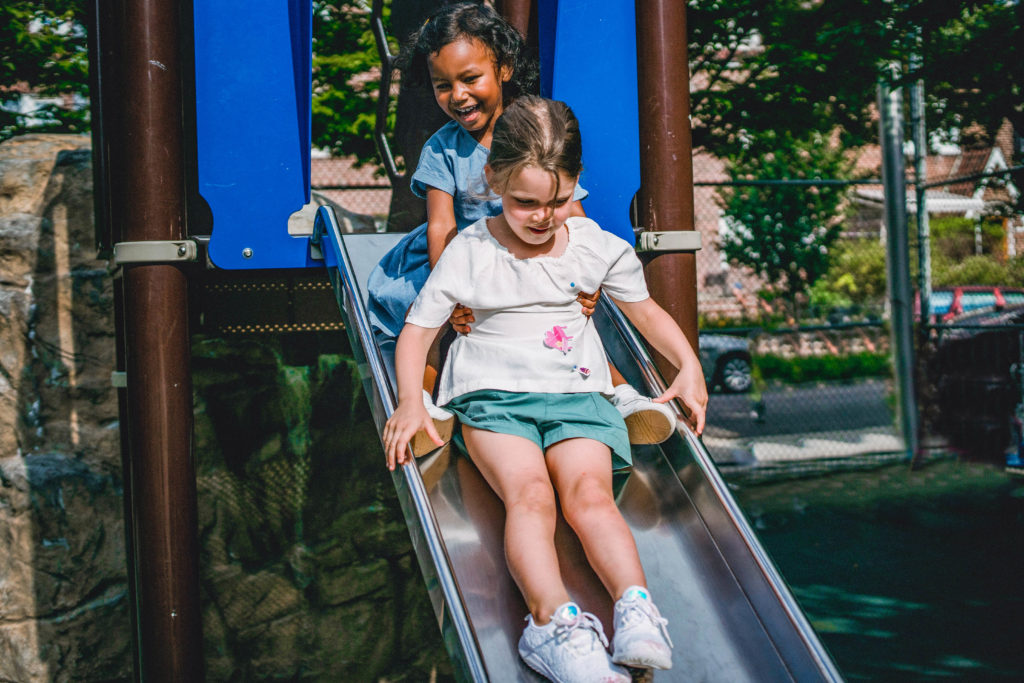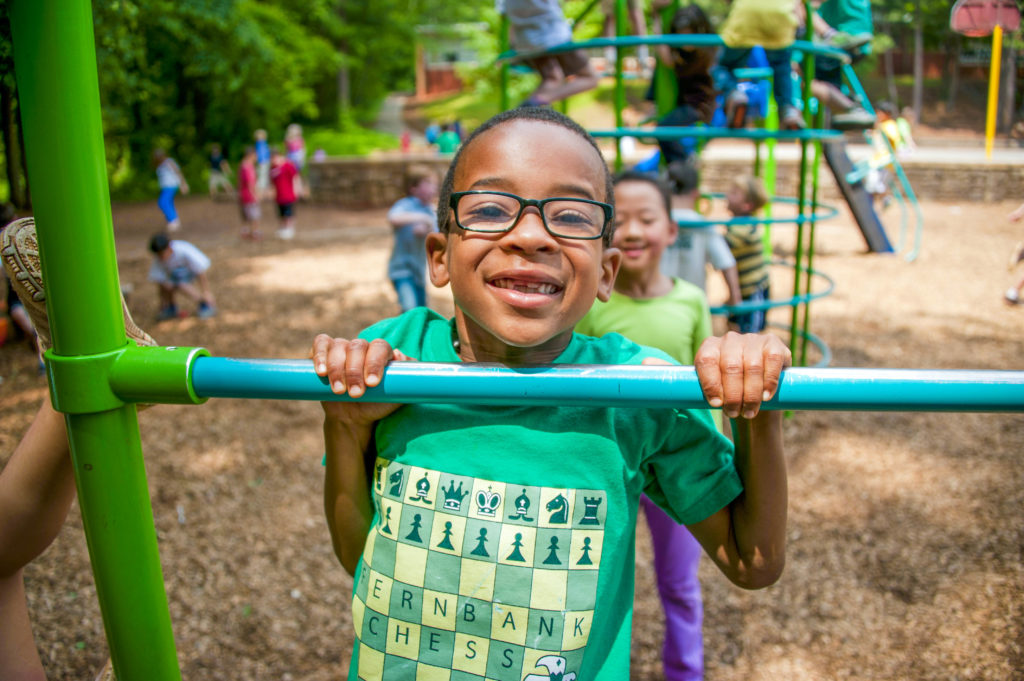September 29, 2025
The Autism Journey: Accepting vs. Resisting A Diagnosis
FEATURED POSTS
September 22, 2025
August 25, 2025
We’re hiring Behavior Interventionists, Teachers, Speech Language Pathologists & More. View open positions
FEATURED POSTS
RONIT MOLKO, PH.D., BCBA-D
STRATEGIC ADVISOR, LEARN BEHAVIORAL
Just because someone is nonspeaking, does not mean they’re non-thinking. Around 25 to 30 percent of children with autism spectrum disorder are minimally verbal or do not speak at all. These individuals are referred to as nonverbal or nonspeaking, but even the term nonverbal is a bit of a misnomer. While nonspeaking individuals with autism may not speak words to communicate, many still understand words and even use written words to communicate.
Nonspeaking individuals with autism utilize a variety of augmentative and alternative communication (AAC) methods. These range from no-tech and low-tech options such as gestures, writing, drawing, spelling words, and pointing to photos or written words, to high-tech options like iPads or speech-generating devices.
There are several reasons that an individual with autism may have difficulty talking or holding conversation that are not related to intellectual disability. The disorder may have prevented the normal development of verbal communication skills. They may also have conditions such as apraxia of speech, which affects specific brain pathways, making it difficult for a person to actually formulate and speak the words they’re intending to say. Some may also have echolalia, which causes a person to repeat words over and over again.
While these conditions prevent many individuals from speaking, it does not mean they cannot learn, understand, or even communicate. There is a pervasive misunderstanding about this among the general population due to a lack of education. It is often wrongly assumed that anyone who has difficulty speaking is intellectually disabled.
This misconception can be particularly harmful when held by medical professionals. In the 1980s, as many as 69 percent of people with an autism diagnosis had a dual diagnosis of mental retardation, which would now be labeled intellectual disability. By 2014, that number had declined to just 30 percent, as researchers improved the diagnostic criteria for autism and a fuller picture of the disorder emerged.
Researchers are still working to try and improve diagnostics and better distinguish nonspeaking autism from intellectual disabilities. As Audrey Thurm, a child clinical psychologist at the National Institute of Mental Health in Bethesda, Maryland says: “We have to figure out who has only autism, who has only intellectual disability and, importantly, who has both intellectual disability and autism. That’s millions of people who could be better served by having an accurate distinction that would put them in the right group and get them the right services.”
It’s important to challenge the perception that those who do not speak cannot think. Not only do we risk failing to give them the proper supports and services, but we also undermine their individuality, ingenuity, creativity, and humanity by failing to see them as they truly are. Just because they are not talking does not mean they do not have much to tell us.
The holidays are an exciting time as we share traditions, spend time with family, and navigate the different gatherings and celebrations. Holiday spirit can also bring holiday stress. We want to help you and your family have the most successful (and least stressful) season by offering our best practices and tips.

Start with Expectations
Having a positive and realistic mindset about what you want to create can make a big difference. What could go right this season? Keep an optimistic view of the possibilities for special moments you want to share. A winning holiday doesn’t have to mean extravagant plans. Consider what would be ideal, be prepared to accept when flexibility is needed, and look for the wins along the way.
Consider Comfort and Safety Needs
When visiting events or other homes, bring items you know will bring comfort for your child—things like earplugs (or headphones), fidgets, and soft clothes. When traveling, ask for needed accommodations from your airline and hotel. Make sure you are aware of possible water nearby and review crisis plans with loved ones.
Practice Before Events
Now is a great time to discuss upcoming changes to schedules and routines. Involve your child in the process whenever possible. Playing memory games with photos of those you will see this holiday season allows your child to identify matching names and faces. Establish a phrase or code word with your child to practice using when they need to take a break from events to calm down and relax.

Maintain Routines
During the holidays, change is inevitable but find ways to create or maintain routines for your child. What are things you can build into every day? Perhaps it’s something you do together each morning, afternoon, and evening (regardless of location). Utilizing visual supports like calendars and independent activity schedules can be helpful too.
Build in Fun!
Whether days are filled with errands or time at home, consider letting your child choose a couple of activities each morning for the day ahead. Here are some suggestions that might work for your family:
Consider Sensory Needs
Holiday meals can be tricky for some. Plan ahead for alternative foods that you know your child will eat. As we mentioned earlier, being mindful of dressing in (or packing extra) comfortable clothing can be helpful. Preferred items, such as toys or other objects that help promote calm for your child, are a good idea too. Consider making a sensory box that includes things to stimulate your child’s touch/sight/sound/taste/smell. Finally, establish a quiet “break space” that your child can utilize when needed.

Plan for Rest and Recovery
After each scheduled big event or outing, try to allow time for a quiet evening that follows. Start a list or document on your computer of things that went well that you want to repeat and ideas about what would make it easier next time.
Transition Back to School
Packing holiday decorations and unpacking clothes can be helpful signals to your child that things are moving back to the normal routine. Other visual cues like a countdown calendar for back to school can help prepare them. Show them when school starts and have them mark off the days. Leave extra time the first morning back to school so you can have a nice breakfast and move with ease into the day. If possible, organize a nice, calm activity after school and focus on what went well at the end of the day.
By Katherine Johnson. M.S., BCBA
Senior Director of Partnerships, LEARN Behavioral
Judy Singer is an autistic Australian social scientist. In the 1990’s, seeing echoes of her mother’s struggles in herself and her own daughter, it occurred to Singer that this common thread pointed to the possibility that their differences were actually neurological traits. They were having a first-hand experience of that part of biodiversity that is the natural range of variations in brain functioning: she coined it neurodiversity.
The neurodiversity paradigm considers all brains to be normal; brain differences are simply the neurological counterpart to genetic variations in height, eye color, or hair color. Scientists consider such variation in biological traits to be essential to the health of individual populations and entire ecosystems. When viewing autism through the lens of neurodiversity, it comes to light that some of the individual differences that have been assumed to need remediation in the past, may actually be important in helping society as a whole make progress through new and different ways of thinking.
The concept of neurodiversity has been enthusiastically embraced by that portion of the autistic community who are able to speak, as it promises to alleviate some of the bias and discrimination they have experienced. Their common message? Specific words and types of support can have unintended negative effects, causing them to feel inferior, powerless, misunderstood.
Arising from these negative experiences is a more widespread understanding of how words and actions affect the private events (thoughts and feelings) of people on the spectrum. ABA practitioners are charged by the BACB Ethical Code to “treat others with compassion, dignity, and respect,” and the voices of the neurodivergent convey essential information about ways to do this.
LEARN’s Response
LEARN’s neurodiversity initiative is a direct result of listening to the insights of autistic folks who are able to express their experiences of living in a society that was built for neurotypical people.
As ABA practitioners, we have always cared about our clients – helping and supporting others is our entire reason for being. In the initial years of our still-young field, that care was expressed by taking a singular approach: teaching skills to help them function in our society. As autistic self-advocates find more channels by which to make their voices heard, the themes that are emerging tell us that there is more to supporting this community than just teaching skills. For instance, using words that validate our clients’ identities and sense of self is important. We can create a positive emotional experience for the people we support during the learning process – by listening to them and giving them agency. And most importantly: where success measures are concerned, our clients’ quality of life should be central.
LEARN is listening.
To learn more about neurodiversity, check out our other blogs “Voices for All: Ash Franks” and “Neurodiversity: What It Means, Why It Matters.”
School is out! Let summer break be a great opportunity to continue your child’s learning and growth.
While summer can bring parents a welcome relief from making lunches and school drop-off and pick-up, it also offers time for kids to build valuable skills. Social skills programs are offered in several cities by different service providers and can offer a structured, play-based environment for children to build essential social, communication, cognitive, and sensory skills. Kids have fun and make friends as they learn while maintaining a helpful routine for themselves and their parents.
Many skill-boosting summer programs take place in group settings that are similar to the school environment, while still providing one-to-one support. These specialized programs promote collaboration and inclusion of peers and some welcome siblings, too.

Social skills programs provide activities that encourage and reward the building of social relationships rather than individual play. Children are grouped with other kids of the same age group and skill level, enabling them to share in age-appropriate games, activities, and communication. Groups are led by highly-trained staff, known as behavior technicians (BTs), who are overseen by behavior analysts. BTs encourage kids to get out of their comfort zone and try new things.
School breaks can impact children academically. The “summer slide” as it is called, refers to a loss of learning that students experience during the summer months. Social skills programs can help children stay mentally and physically active. While promoting positive behaviors and peer interaction, physical activity is suggested to improve self-esteem and general levels of happiness.

Engaging in physical play and teamwork exercises can also support overall motor skills, which support many everyday activities. This can help children feel more confident and capable.
By consistently promoting positive behaviors and language, a child can learn what they can do rather than what they cannot do. Social skills programs offer valuable learning opportunities for kids to communicate their needs and engage in behaviors that help them in daily activities and in different environments.
Click here for other summer-themed blogs to support your family this season.
Summer is a few short weeks away! The joy of completing the school year also brings the challenges associated with unscheduled days, unpredictable new environments, and the unexpected elements of the season.
Here are seven helpful tips for planning your family’s summer that we hope will help create more fun and reduce stress:
Try to maintain your child’s typical eating and sleeping schedule as much as possible. It’s not easy to stick to a schedule during summer, especially as this is a time when you want to let go a bit and relax. If you can maintain the basic structure of your child’s routine with eating, sleeping, and some routine in the day, you are less likely to have an overwhelmed or anxious child.
You may want to create opportunities for your child to build social skills. Summer is a great time to enroll your child in social skills programs where they can participate in small-group activities and learn how to navigate relationships while receiving one-to-one support.
Whenever possible, it can be helpful to familiarize your child ahead of time with the destination by using photographs, videos, etc. If your child has never flown or stayed in a hotel before, practicing these on a small scale can be helpful. Some airlines offer practice travel for families with autism. You may also want to visit a hotel room before an overnight stay.
It‘s important to acquaint your family with your vacation details, such as where you‘ll be staying during your trip. If you are staying with family or renting an apartment or home, be sure to check that each door has a lock and that the perimeter of the house is secure. It’s also a good idea to familiarize yourself with other parts of the property, such as areas that have access to water and other roads. Knowing these will help keep your child’s safety top of mind should they explore the area.
While vacationing or sunbathing with friends or family, welcome them to become part of your team. By sharing your concerns and requests for support, your community can be mindful and diligent with any possible safety or wandering risks. Helping others understand how they can best support you and your family, can make your experience more relaxed and enjoyable.
Remember to use what works for your child while planning your family’s activities. If you‘re working with an ABA provider, ask for assistance with goals that support a specific outing or trip.
Summer is the perfect time to maximize learning opportunities, access resources that may have been limited due to school schedules, and work on intensive programs that require a larger time commitment.
While that is all true, it’s still important to find time to have fun, enjoy the activities summer has to offer, and watch your child thrive!
Here are some additional resources to help make the summer season a success for the whole family: